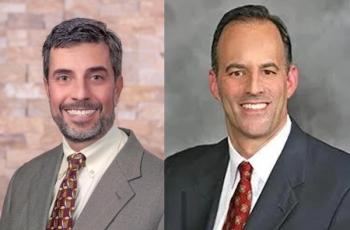
How one practice conquered burnout
Three strategies for prevention of burnout
Two years ago, when Mission Health in Asheville, N.C., gave their standard employee engagement survey, only 17.5 percent reported being “fully engaged,” says Ronald A. Paulus, MD, Mission’s president and chief executive officer.
A year and a half later, 40 percent of employees reported being fully engaged. “It was a dramatic change,” says Paulus.
Mission achieved this by rolling out what Paulus describes as “a three-legged stool.”
While none of these three legs are perfect, they’ve had a profound impact on Mission Health’s
RELATED READING:
“I think the sense of movement creates hope, hope creates energy and energy creates problem-solving,” Paulus says.
Team engagement
Paulus says
Using an app, each team member checks in with his or her team leader at the beginning of every week. A team leader is not necessarily one’s boss, either.
Each week, the team leader asks each team member three things: what they need from the team leader, what they loved about their week and what they loathed.
“That gives you insights into the highs and lows, and allows you to redirect people out of the lows,” Paulus says.
Then team members list their priorities for the week. The team leader might help them to change these if needed.
Lastly, they rate themselves on the following two characteristics:
- How much value do I feel like I contributed last week?
- How much did I get to work in my strengths last week?
This creates a kind of “real-time, concurrent view of an employee engagement survey,” Paulus says. This continuous feedback is the first and most important leg of the stool.
Reduce hassles, increase joys
Leg two, called “Mission Renew,” is about improving the work environment by shadowing employees to “collect and amalgamate their hassles and joys,” Paulus says. They do their best to eliminate hassles and “upscale” the joys.
In many cases, the hassles derive predominantly from information technology, such as EHR systems, but sometimes it’s a mundane problem such as, “this printer always has streaks on it.”
BLOG:
This part of the process reveals that people are not working where their strengths are, and Mission Health has created a path in its career development center aimed particularly at non-physicians to retrain people who love the company, but not their individual job responsibilities.
Resilience
The third and final leg of the stool revolves around helping staff cultivate “individual resilience.” It’s an approach Mission takes from a company called Life XT, a productivity program that works with various organizations.
LIfe XT’s founders wrote a book called “Start Here” that provides a prescription “using scientific evidence for resilience by drawing on common characteristics in other cultures such as meditation, gratitude and engagement in activities beyond the self,” Paulus says.
However, he makes clear that individuals are never left to figure it out on their own.
“We try to look at all three legs because to put it all on the individual and say ‘You just need to become more resilient’ is sort of like blaming the person for the world being screwed up around them,” Paulus says.
Newsletter
Stay informed and empowered with Medical Economics enewsletter, delivering expert insights, financial strategies, practice management tips and technology trends — tailored for today’s physicians.



















